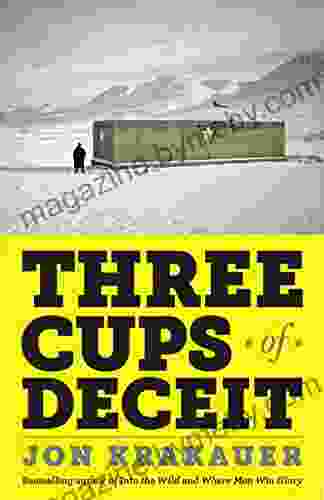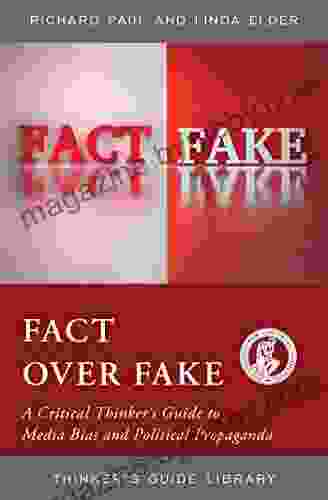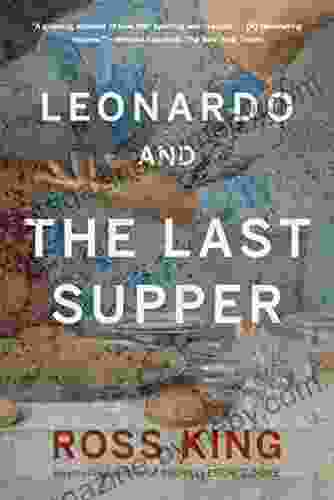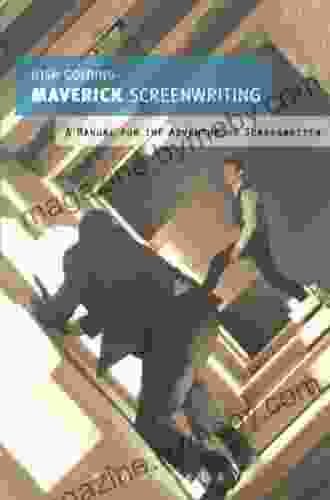Leonardo and The Last Supper: A Journey into Da Vinci's Masterpiece

In the heart of Milan's spiritual center, amidst the hallowed walls of the Santa Maria delle Grazie refectory, unfolds a captivating tale of artistry, faith, and eternal enigmas. Leonardo da Vinci's The Last Supper, a monumental fresco painted between 1495 and 1498, has captivated the imaginations of art enthusiasts, scholars, and the general public alike for centuries.
4.3 out of 5
| Language | : | English |
| File size | : | 10683 KB |
| Text-to-Speech | : | Enabled |
| Enhanced typesetting | : | Enabled |
| X-Ray | : | Enabled |
| Word Wise | : | Enabled |
| Print length | : | 351 pages |
| Lending | : | Enabled |
| Screen Reader | : | Supported |
The Genesis of a Masterpiece
Leonardo da Vinci, the polymath whose genius spanned multiple disciplines, embarked on the creation of The Last Supper during the height of his career in Milan. Commissioned by Duke Ludovico Sforza and his wife Beatrice d'Este, the fresco was intended to adorn the refectory of their newly built Dominican church of Santa Maria delle Grazie.
The significance of the subject matter, depicting the final meal shared by Jesus Christ with his disciples before his crucifixion, resonated deeply with the religious beliefs of the time. Leonardo approached this commission with meticulous attention to detail, experimenting with innovative painting techniques that would forever change the course of art history.
Unveiling the Timeless Symbolism
The Last Supper is not merely a depiction of a historical event but a profound exploration of human emotions and spiritual truths. Leonardo's genius lies in his masterful use of symbolism and iconography to convey complex narratives through subtle gestures, facial expressions, and compositional elements.
At the heart of the composition sits Jesus Christ, isolated in quiet contemplation. His hands, forming a perfect triangle, represent both blessing and betrayal. The disciples are arranged in four groups of three, each expressing a distinct reaction to Jesus' announcement of his impending betrayal. Judas Iscariot, the betrayer, is depicted with a money bag in his hand and a shadow cast across his face.
Surrounding the central figure of Christ, a myriad of symbols awaits discovery. The loaf of bread and the chalice of wine allude to the Eucharist, while the salt shaker in front of Judas foreshadows his pivotal role in the betrayal. The window behind Jesus frames a landscape bathed in soft, ethereal light, symbolic of both the hope of salvation and the impending tragedy.
Innovative Techniques: A Testament to Leonardo's Brilliance
Leonardo da Vinci's artistic brilliance extended beyond his profound understanding of human anatomy and perspective. In The Last Supper, he pushed the boundaries of painting techniques, employing innovative methods that would profoundly influence the future of art.
Instead of using the traditional fresco method, which required painting on wet plaster, Leonardo opted for a combination of tempera and oil paints on a dry wall. This allowed him to work slowly and meticulously, layering multiple glazes to create a luminous and lifelike effect. The result is a fresco that combines the durability of traditional wall painting with the richness of oil painting.
Leonardo also employed the technique of sfumato, where tonal transitions occur gradually, creating a soft and ethereal quality. This meticulous attention to detail is evident in the subtle gradations of light and shadow on the figures' faces, capturing their emotional complexities and giving the scene an almost three-dimensional appearance.
The Enduring Legacy: A Cultural and Historical Icon
The Last Supper has transcended its religious context to become a universal symbol of art, culture, and human experience. Over the centuries, it has inspired countless artists, writers, and musicians, becoming an iconic image reproduced and referenced in various forms.
In addition to its artistic significance, The Last Supper holds immense cultural and historical value. The refectory where it resides has been designated a UNESCO World Heritage Site, attracting millions of visitors annually who come to witness Leonardo's masterpiece in its original setting.
However, time and environmental factors have taken their toll on this delicate work of art. Restorations and conservation efforts have been ongoing for centuries, but The Last Supper remains a fragile testament to Leonardo's genius, requiring constant care to preserve its beauty for generations to come.
: A Masterpiece for Eternity
Leonardo and The Last Supper is more than just a painting; it is a window into the mind of a genius, an exploration of human emotions, and a timeless symbol of art and culture. Through its intricate symbolism, innovative techniques, and enduring legacy, The Last Supper continues to captivate and inspire, proving that true masterpieces transcend time, remaining forever relevant and awe-inspiring.
Whether you are a devout art lover, a student of history, or simply someone seeking a profound artistic experience, a journey to Milan to witness The Last Supper is a pilgrimage that will stay with you long after you have left its hallowed halls. In the presence of this masterpiece, one cannot help but be humbled by the genius of Leonardo da Vinci and the enduring power of art.
4.3 out of 5
| Language | : | English |
| File size | : | 10683 KB |
| Text-to-Speech | : | Enabled |
| Enhanced typesetting | : | Enabled |
| X-Ray | : | Enabled |
| Word Wise | : | Enabled |
| Print length | : | 351 pages |
| Lending | : | Enabled |
| Screen Reader | : | Supported |
Do you want to contribute by writing guest posts on this blog?
Please contact us and send us a resume of previous articles that you have written.
 Book
Book Novel
Novel Page
Page Chapter
Chapter Text
Text Story
Story Genre
Genre Reader
Reader Library
Library Paperback
Paperback E-book
E-book Magazine
Magazine Newspaper
Newspaper Paragraph
Paragraph Sentence
Sentence Bookmark
Bookmark Shelf
Shelf Glossary
Glossary Bibliography
Bibliography Foreword
Foreword Preface
Preface Synopsis
Synopsis Annotation
Annotation Footnote
Footnote Manuscript
Manuscript Scroll
Scroll Codex
Codex Tome
Tome Bestseller
Bestseller Classics
Classics Library card
Library card Narrative
Narrative Biography
Biography Autobiography
Autobiography Memoir
Memoir Reference
Reference Encyclopedia
Encyclopedia John W Boudreau
John W Boudreau Robert B Gordon
Robert B Gordon Jordannah Elizabeth
Jordannah Elizabeth Marilyn Singer
Marilyn Singer Tylerann Townsend
Tylerann Townsend Joshua Akin
Joshua Akin Kirsten Miller
Kirsten Miller Jonathan Bergmann
Jonathan Bergmann Peg Heron Heidel
Peg Heron Heidel Roland L Mcintosh
Roland L Mcintosh Judy Press
Judy Press Katharina Martin
Katharina Martin Jonathan Nevair
Jonathan Nevair Jon Lee Anderson
Jon Lee Anderson Joseph Lumpkin
Joseph Lumpkin John R Perry
John R Perry Julia Rothman
Julia Rothman Jon Finkel
Jon Finkel Jonathan Chait
Jonathan Chait Joshua Darwin
Joshua Darwin
Light bulbAdvertise smarter! Our strategic ad space ensures maximum exposure. Reserve your spot today!

 Ibrahim BlairUnveiling the Deceptive World of Humanitarian Aid: A Review of Jon Krakauer's...
Ibrahim BlairUnveiling the Deceptive World of Humanitarian Aid: A Review of Jon Krakauer's... Michael CrichtonFollow ·17.1k
Michael CrichtonFollow ·17.1k Leo TolstoyFollow ·6.3k
Leo TolstoyFollow ·6.3k Harold BlairFollow ·18.3k
Harold BlairFollow ·18.3k Juan RulfoFollow ·2.2k
Juan RulfoFollow ·2.2k Harry HayesFollow ·18.2k
Harry HayesFollow ·18.2k Chuck MitchellFollow ·5.3k
Chuck MitchellFollow ·5.3k Emanuel BellFollow ·12.3k
Emanuel BellFollow ·12.3k Manuel ButlerFollow ·12.9k
Manuel ButlerFollow ·12.9k

 Efrain Powell
Efrain PowellCritical Thinker's Guide to Media Bias and Political...
In a world awash with information, it has...

 Aubrey Blair
Aubrey BlairMurder Is Bad Manners: An Unforgettable English Mystery
Prepare yourself for a captivating literary...

 Luke Blair
Luke BlairDon't Settle For Safe: Embrace Adventure and Live a Life...
<p>In this inspiring and...

 W.H. Auden
W.H. AudenRoblox Codes Dragon Adventures King Legacy All Combat...
Roblox is a massively popular online game...
4.3 out of 5
| Language | : | English |
| File size | : | 10683 KB |
| Text-to-Speech | : | Enabled |
| Enhanced typesetting | : | Enabled |
| X-Ray | : | Enabled |
| Word Wise | : | Enabled |
| Print length | : | 351 pages |
| Lending | : | Enabled |
| Screen Reader | : | Supported |














